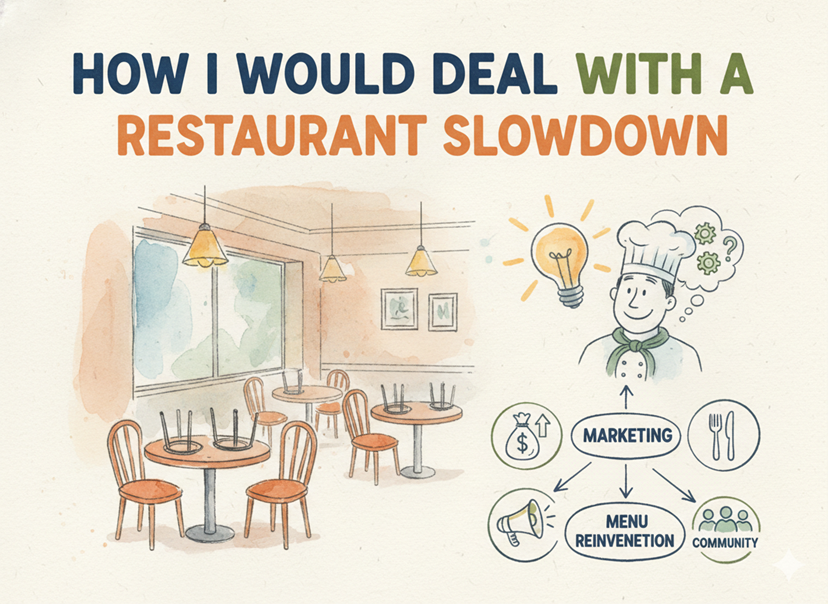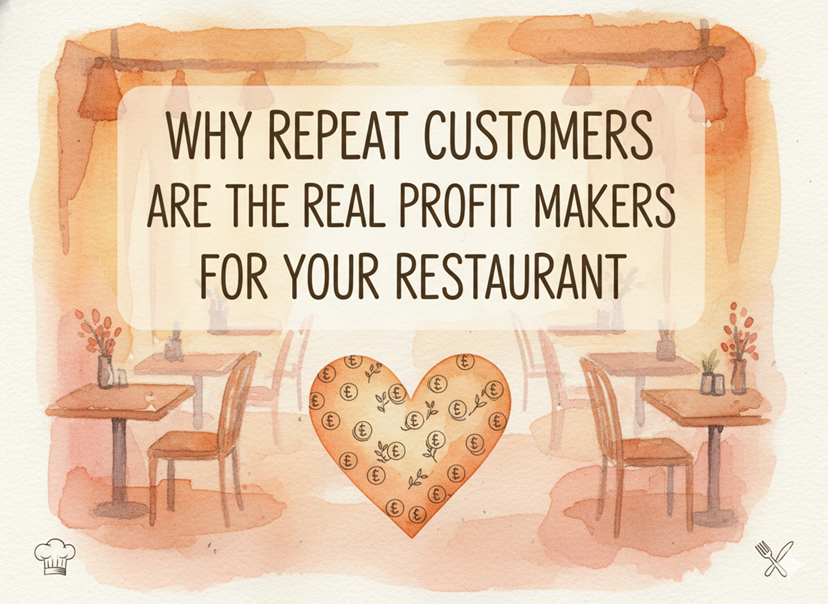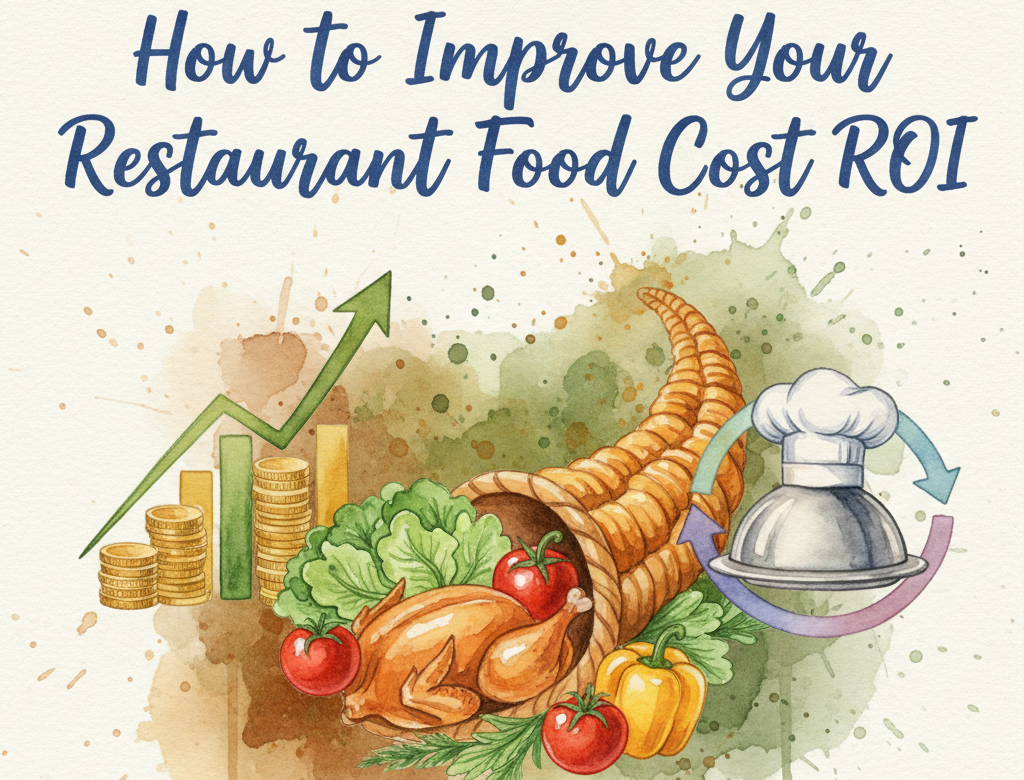Money keeps your business moving. If you don’t track where it’s coming from and where it’s going, you could run into serious trouble. That’s why understanding cash flow is one of the most important things you can do to keep your business healthy.
In this blog, we’ll break down everything you need to know about cash flow, what it is, and why it matters. We will also talk about cash flow problems and their solutions. This guide will equip you!
What Exactly Is Cash Flow?
Cash flow is simply the money coming into your business and the money going out.
Money coming in (inflow): Sales from customers, payments for catering, or even loans.
Money going out (outflow): Paying for food supplies, staff wages, rent, utilities, and other expenses.
If more money comes in than goes out, you have positive cash flow—this is good. It means you can pay bills, save, and maybe even grow your business.
If more money goes out than comes in, you have negative cash flow—this is bad. It means you might struggle to pay suppliers, employees, or even rent.
Why You Should Care About Cash Flow
1. Helps You Avoid Running Out of Money
Just because you’ve made sales doesn’t mean you have cash in hand. If customers take too long to pay or if you have large upfront costs, you could end up in a tight spot. Imagine this: you’ve had a great month with lots of orders, but most of them were paid on credit. Meanwhile, you still have to pay your suppliers, staff, and rent. If the money from those sales hasn’t hit your account yet, you might not have enough to cover your bills.
This is why tracking cash flow is so important. It shows you exactly when money is coming in and when it’s going out. If you see a gap where expenses are due before payments arrive, you can take action—maybe by following up on late payments, adjusting spending, or using a short-term loan to bridge the gap. Without this knowledge, you could suddenly find yourself unable to pay for essential things, which can quickly spiral into bigger problems.
2. Lets You Plan for the Future
Cash flow isn’t just about surviving today—it’s about preparing for tomorrow. When you track your cash flow, you get a clear picture of your financial patterns. You’ll know which months are typically slow, when big bills are due, and when you’ll have extra money to invest back into your business.
For example, if you notice that January is always a slow month, you can save up during the busy holiday season to cover costs. Or, if you see that a large equipment payment is coming up in three months, you can start setting aside money now instead of scrambling at the last minute.
This kind of planning also helps you make smarter decisions about growth. If you’re thinking about expanding, renovating, or adding new menu items, checking your cash flow will tell you whether you can afford it or need to wait for a better time. Without this insight, you might take on too much too soon and put your business at risk.
3. Keeps Your Business Alive
It might sound dramatic, but poor cash flow management is one of the biggest reasons businesses fail. A study by U.S. Bank found that 82% of businesses shut down because of cash flow problems, not because they weren’t making sales. This is especially true in the food industry, where profit margins can be tight, and expenses are always coming up.
Think about it: even if your restaurant is packed every night, you still have to pay for food, staff, rent, and utilities before you see any profit. If you’re not keeping track of how much cash you have available, you could end up in a situation where you’re bringing in revenue but still can’t pay your bills.
Worse yet, if you fall behind on payments, suppliers might stop delivering, employees could leave, and you might even face legal trouble if you can’t cover taxes or loans. Once that happens, it’s hard to recover. That’s why staying on top of cash flow isn’t just helpful—it’s essential for keeping your doors open.
Common Cash Flow Problems You Might Face
Late Customer Payments Can Cripple Your Business
One of the most frustrating cash flow problems comes when customers don’t pay on time. When you extend credit to catering clients or large corporate orders, you’re essentially giving them an interest-free loan. While the sale shows up in your books, the actual cash might not arrive for 30, 60, or even 90 days. During this waiting period, you still need to cover all your regular expenses – payroll, rent, utilities, and supplier payments. This gap between making a sale and receiving payment can create serious cash shortages. What’s worse, some clients may dispute invoices or simply refuse to pay, forcing you to spend additional time and money chasing payments. The longer money stays out of your account, the harder it becomes to meet your financial obligations.
Seasonal Fluctuations Require Careful Planning
The food business naturally ebbs and flows throughout the year. You might enjoy booming sales during holiday seasons or summer months, only to face dramatic slowdowns during off-peak periods. This cyclical nature becomes problematic when you don’t set aside money during profitable times to carry you through leaner months. Many operators make the mistake of expanding or making large purchases during peak seasons, only to find themselves strapped for cash when business inevitably slows down. Without proper planning, these seasonal dips can force you to take on debt just to keep the lights on, creating a dangerous cycle that’s hard to break.
Upfront Costs Create Constant Pressure
Unlike some businesses that get paid before delivering products or services, restaurants and food businesses typically pay expenses long before seeing any revenue. You must purchase ingredients, pay staff, and cover fixed costs like rent and utilities before serving a single customer. This negative cash flow cycle means you’re constantly operating at a deficit until customer payments start coming in. The problem intensifies when you experience growth – more sales require more upfront spending on inventory and labor, stretching your cash reserves even thinner. If you don’t carefully manage this timing mismatch between expenses and income, you could find yourself unable to pay suppliers or meet payroll, no matter how busy you are.
Unexpected Expenses Can Derail Your Finances
No matter how well you plan, emergencies happen in the food industry. Equipment breaks down at the worst possible times – a walk-in cooler fails, an oven stops working during dinner service. Health inspections might require sudden facility upgrades. Delivery delays could force you to pay premium prices for last-minute ingredient substitutions. These unplanned expenses can devastate your cash position if you’re not prepared. Without an emergency fund, you might have to choose between making critical repairs and paying your staff, or worse, take on high-interest debt just to keep operating. The most successful operators anticipate these surprises by maintaining cash reserves equal to several months of operating expenses.
Inventory Management Challenges Drain Cash
Finding the right balance with inventory is a constant struggle. Order too much, and you risk spoilage and waste – essentially throwing money straight in the trash. Order too little, and you face stockouts that lead to disappointed customers and lost sales. Both scenarios hurt your cash flow in different ways. Over-ordering ties up precious cash in products that may never generate revenue, while under-ordering means missing out on potential profits. The problem compounds when you factor in fluctuating food costs and minimum order requirements from suppliers. Smart inventory management requires daily attention to sales patterns, waste tracking, and careful forecasting to ensure you’re investing your limited cash in the right products at the right time.
How to Fix Cash Flow Problems
Implement a Cash Flow Statement System
A cash flow statement serves as your financial compass, providing a clear breakdown of all money entering and leaving your business. This essential document tracks three critical components: operational income from sales and services, outgoing expenses including supplier payments and payroll, and your resulting cash position. By maintaining this statement with regular updates – ideally weekly or even daily for businesses with tight margins – you create an early warning system for potential cash shortages. The real power comes from analyzing trends over time, allowing you to anticipate challenges before they become emergencies. Many operators find that simply seeing their cash position in black and white helps them make smarter spending decisions and avoid unnecessary financial risks.
Accelerate Your Receivables Process
Improving payment collection requires a multi-pronged approach. Consider implementing a 2% discount for invoices paid within 10 days, which often motivates faster payments while costing less than the interest on borrowed funds. For catering events or large orders, a 30-50% deposit is required upfront, with the balance due before delivery. Modern payment solutions like mobile card readers and digital invoicing platforms can dramatically reduce the time between service and payment by eliminating check processing delays. For regular corporate clients, set clear payment terms and follow up immediately when payments become overdue. Some businesses find success with automated payment reminders and late fees for chronically delayed payers, though these policies should be communicated clearly from the outset.
Conduct a Cost Optimization Review
Strategic cost reduction starts with analyzing every expense line by line. Work with chefs to minimize food waste through better inventory planning and creative menu engineering. Approach suppliers about volume discounts or extended payment terms – many will negotiate rather than lose a steady customer. Examine staffing patterns using sales data to align labor costs with actual demand, potentially implementing split shifts or cross-training employees. Review all recurring expenses like utilities, insurance, and software subscriptions for potential savings. The goal isn’t simply to cut costs, but to eliminate waste while maintaining quality and service standards. Even small savings across multiple categories can significantly improve your cash position over time.
Build a Seasonal Cash Reserve
Financial cushioning requires disciplined saving during peak periods. Determine your average monthly operating expenses and aim to set aside enough to cover 2-3 months of costs during your busiest seasons. Treat this reserve as untouchable except for genuine emergencies or planned slow periods. Consider opening a separate business savings account specifically for this purpose to avoid accidental spending. The reserve amount should be based on historical sales patterns – if you typically see a 30% drop in February, save accordingly. This practice not only prevents panic during downturns but also gives you the confidence to make strategic investments when opportunities arise.
Explore Strategic Financing Options
When cash gaps are unavoidable, short-term financing can provide a bridge, but it requires careful consideration. Business lines of credit offer flexibility, allowing you to borrow only what you need and pay interest solely on the amount used. Credit card financing may work for very short-term needs if you can pay the balance quickly. For equipment purchases, explore leasing options that preserve cash flow. Always calculate the true cost of borrowing and have a clear repayment plan before taking on debt. Remember that while financing can solve immediate problems, it’s not a substitute for fixing underlying cash flow issues.
Leverage Technology for Financial Visibility
Modern accounting software transforms cash flow management from guesswork to precision. Cloud-based platforms like QuickBooks or Xero automatically sync with your bank accounts and point-of-sale systems, providing real-time visibility into your financial position. These tools can generate customized cash flow forecasts, send payment reminders, and identify spending patterns that might otherwise go unnoticed. Many systems offer mobile access, allowing you to check your cash position anytime, anywhere. The automation features save countless hours on manual data entry while reducing human error. For maximum benefit, dedicate time to learning all features or work with an accountant to set up reports tailored to your specific needs.




